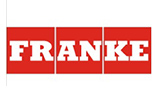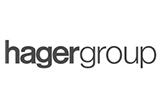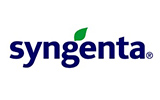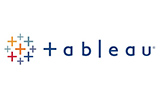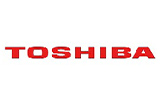Table of Contents
Chapter 1. Global Business Process Management Market Executive Summary
1.1. Global Business Process Management Market Size & Forecast (2025-2033)
1.2. Regional Summary
1.3. Segmental Summary
1.3.1. By Component
1.3.2. By Deployment Type
1.3.3. By Organization Size
1.3.4. By Business Function
Sales and Marketing
Human Resource Management (HRM)
Procurement and Supply Chain Management (SCM)
Customer Service and Support
1.3.5. By Industry
1.4. Key Trends
1.5. Recession Impact
1.6. Analyst Recommendation & Conclusion
Chapter 2. Global Business Process Management Market Definition and Research Assumptions
2.1. Research Objective
2.2. Market Definition
2.3. Research Assumptions
2.3.1. Inclusion & Exclusion
2.3.2. Limitations
2.3.3. Supply Side Analysis
2.3.3.1. Availability
2.3.3.2. Infrastructure
2.3.3.3. Regulatory Environment
2.3.3.4. Market Competition
2.3.3.5. Economic Viability (Consumer's Perspective)
2.3.4. Demand Side Analysis
2.3.4.1. Regulatory Frameworks
2.3.4.2. Technological Advancements
2.3.4.3. Environmental Considerations
2.3.4.4. Consumer Awareness & Acceptance
2.4. Estimation Methodology
2.5. Years Considered for the Study
2.6. Currency Conversion Rates
Chapter 3. Global Business Process Management Market Dynamics
3.1. Market Drivers
3.1.1. Rapid Digital Transformation and Automation Adoption
3.1.2. Integration of AI and Cloud-based Technologies
3.1.3. Escalating Demand for Operational Efficiency and Cost Reduction
3.2. Market Challenges
3.2.1. High Initial Investment and Implementation Costs
3.2.2. Complexity in Integrating with Legacy Systems
3.3. Market Opportunities
3.3.1. Expanding Adoption in Emerging Markets
3.3.2. Advancements in Low-code/No-code BPM Platforms
3.3.3. Increasing Demand for Regulatory Compliance Solutions
Chapter 4. Global Business Process Management Market Industry Analysis
4.1. Porter's 5 Force Model
4.1.1. Bargaining Power of Suppliers
4.1.2. Bargaining Power of Buyers
4.1.3. Threat of New Entrants
4.1.4. Threat of Substitutes
4.1.5. Competitive Rivalry
4.1.6. Futuristic Approach to Porter's 5 Force Model
4.1.7. Porter's 5 Force Impact Analysis
4.2. PESTEL Analysis
4.2.1. Political
4.2.2. Economical
4.2.3. Social
4.2.4. Technological
4.2.5. Environmental
4.2.6. Legal
4.3. Top Investment Opportunity
4.4. Top Winning Strategies
4.5. Disruptive Trends
4.6. Industry Expert Perspective
4.7. Analyst Recommendation & Conclusion
Chapter 5. Global Business Process Management Market Size & Forecasts by Component 2025-2033
5.1. Segment Dashboard
5.2. Global Business Process Management Market: Component Revenue Trend Analysis, 2022 & 2032 (USD Million/Billion)
Chapter 6. Global Business Process Management Market Size & Forecasts by Deployment Type 2025-2033
6.1. Segment Dashboard
6.2. Global Business Process Management Market: Deployment Type Revenue Trend Analysis, 2022 & 2032 (USD Million/Billion)
Chapter 7. Global Business Process Management Market Size & Forecasts by Organization Size, Business Function & Industry 2025-2033
7.1. By Organization Size
7.1.1. Small and Medium Enterprises (SMEs)
7.1.2. Large Enterprises
7.2. By Business Function
7.2.1. Sales and Marketing
7.2.2. Human Resource Management (HRM)
7.2.3. Procurement and Supply Chain Management (SCM)
7.2.4. Customer Service and Support
7.3. By Industry
7.3.1. Banking, Financial Services, and Insurance (BFSI)
7.3.2. Healthcare
7.3.3. Retail and E-Commerce
7.3.4. IT and Telecom
7.3.5. Manufacturing
7.3.6. Government and Public Sector
7.3.7. Energy and Utilities
7.3.8. Others
Chapter 8. Global Business Process Management Market Size & Forecasts by Region 2025-2033
8.1. North America BPM Market
8.1.1. U.S. BPM Market
8.1.1.1. Component breakdown: size & forecasts, 2025-2033
8.1.1.2. Deployment Type breakdown: size & forecasts, 2025-2033
8.1.2. Canada BPM Market
8.2. Europe BPM Market
8.2.1. UK BPM Market
8.2.2. Germany BPM Market
8.2.3. France BPM Market
8.2.4. Spain BPM Market
8.2.5. Italy BPM Market
8.2.6. Rest of Europe BPM Market
8.3. Asia Pacific BPM Market
8.3.1. China BPM Market
8.3.2. India BPM Market
8.3.3. Japan BPM Market
8.3.4. Australia BPM Market
8.3.5. South Korea BPM Market
8.3.6. Rest of Asia Pacific BPM Market
8.4. Latin America BPM Market
8.4.1. Brazil BPM Market
8.4.2. Mexico BPM Market
8.4.3. Rest of Latin America BPM Market
8.5. Middle East & Africa BPM Market
8.5.1. Saudi Arabia BPM Market
8.5.2. South Africa BPM Market
8.5.3. Rest of Middle East & Africa BPM Market
Chapter 9. Competitive Intelligence
9.1. Key Company SWOT Analysis
9.1.1. IBM Corporation
9.1.2. Oracle Corporation
9.1.3. SAP SE
9.2. Top Market Strategies
9.3. Company Profiles
9.3.1. IBM Corporation
9.3.1.1. Key Information
9.3.1.2. Overview
9.3.1.3. Financial (Subject to Data Availability)
9.3.1.4. Product Summary
9.3.1.5. Market Strategies
9.3.2. Appian Corporation
9.3.3. Pegasystems Inc.
9.3.4. TIBCO Software Inc.
9.3.5. Microsoft Corporation
9.3.6. OpenText Corporation
9.3.7. Nintex Global Ltd.
9.3.8. Bonitasoft
9.3.9. Kissflow Inc.
9.3.10. Creatio
9.3.11. BP Logix Inc.
9.3.12. Agiloft Inc.
Chapter 10. Research Process
10.1. Research Process
10.1.1. Data Mining
10.1.2. Analysis
10.1.3. Market Estimation
10.1.4. Validation
10.1.5. Publishing
10.2. Research Attributes






